Review Toshiba Portégé R830
The Portégé R830 has very good performance and battery life, but the drawback of the R700 has not improved much.
After the arrival of R700 which was rated quite high last year, Toshiba continues to bring the business model to one of its most important development goals this year with the R830.
The upgraded version of the Portégé line still retains its advantages such as light weight, firm shell, durable, bold business style. Not only that, the R830 also owns the upgraded configuration with Intel Core i5 second generation processor (Core i7 version will appear later in Vietnam) and some other advancements in features.

Portégé R830 with a slim, luxurious design. (Photo: Tuan Hung).
Toshiba Portégé R830 is equipped with a 13.3-inch screen, Intel Core i5-2520M processor with 2.5 GHz speed, 4GB RAM (up to 8GB upgrade), hard drive of 500GB capacity of 7,200 rpm. , Bluetooth 3.0, USB 3.0. This is also the model tested and evaluated in the article.
Reference price for R830 with the above configuration is 31.5 million VND (VAT included). Portégé R830 version sold in Vietnam is warranted worldwide for 3 years.
Here are some general reviews, details about this model (click on each section to see details).
Part 1: Design, keyboard, Touchpad
Part 2: Screen, performance
Part 3: Sound, heat sink, battery life
Part 4: Compare with some other models
General assessment.
* Advantages
- Light berry style with business style
- Durable, spill-resistant keyboard
- Performance is good compared to configuration
- Very good battery life
* Defect
- The ability to dissipate heat has not improved much compared to the R700 series
- Poor speaker sound
- No keyboard backlight yet
- Screen resolution is not worthy of other features
Design.

Scratched alloy shell.
R830 is not much different from the R700 in design in general. Machine still owns aluminum alloy shell, magnesium is very solid. Impact resistance when falling from a height of more than 70 cm and bearing pressure equivalent to 100 kg on the top of the machine. R830 has a thickness of only about 1.9 cm and weighs from 1.4 kg. These parameters are not much different from the R700 but not so special and outstanding as last year due to the ultraportable ultrabook line is attracting a lot of attention from consumers.
The R830 has curved curves on the soft side than its predecessor, including the lid also tends to bend slightly near the front edge. In addition, the hinge design, heatsink slot remains the same.

Right next to the machine.

Left edge.

Dock connection slot on the underside.
As a business model, the Portégé R830 is equipped with the most complete connectivity, from the latest USB 2.0, USB 3.0, VGA to HDMI and eSATA. Although the design is very thin and light with the 13.1-inch screen, but the R830 still owns the optical drive, the advantage has been maintained by Toshiba from the R700.
The layout of the ports of this year is more subtle than last year when the VGA port was designed quite far from the heat sink to avoid the harmful effects of the heat released. In addition, the distance between the VGA port and the remaining ports is also wider to accommodate VGA plugs from large sized projectors or monitors.
The R830 also has a dock slot on the bottom edge. This device will add battery power and graphics to the Portégé R380 when added. However, the dock of the device is not included in Vietnam but users have to find a separate purchase.
Keyboard, touchpad.

Keyboard of Portégé R830.
R830 continues to be equipped with chiclet-style keyboard like R700. Key size at first glance is quite small but has distance and size according to standard. Journey keys are a bit short but in return the good and smooth bounce feels very comfortable for users. The navigation keys are also easy to get used to when surfing the web or viewing documents even slightly smaller than the rest of the buttons.
The unfortunate point is that the R380 does not have a keyboard backlight, which is quite a pity and surprising with a business model.
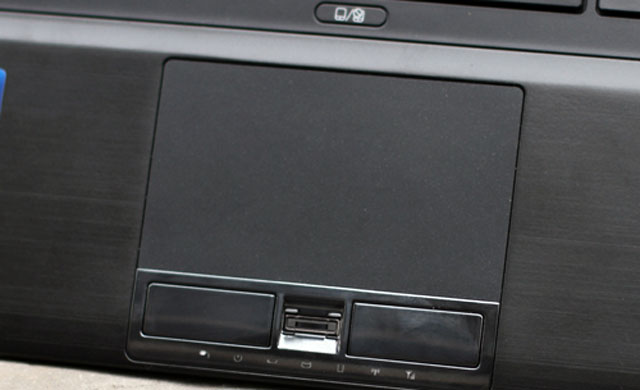
Touchpad.
This year's touchpad retains its sensitivity and has a good grip to avoid slippery like the R700. In addition, overcoming the weakness of the button, the two mouse buttons of the R830 were lighter and shorter keys made the user feel more comfortable than the predecessor.
Toshiba is integrated and this touchpad has a fingerprint recognition slot and a system of signal lights for connection, battery, charging .
Part 2: Screen, performancePart 3: Sound, heat sink, battery life
Part 4: Compare with some other models
Screen.
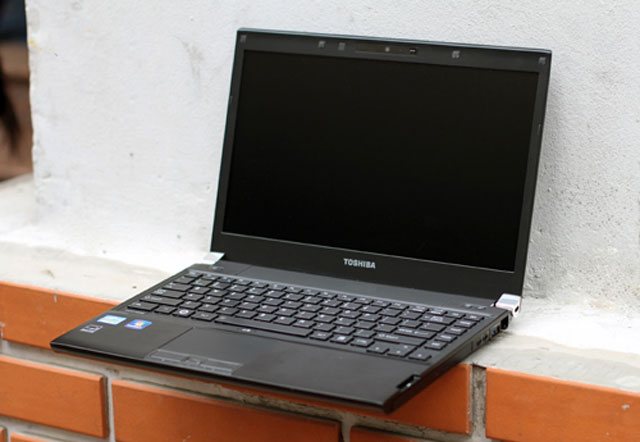
Anti-shadow screen of R830.
Toshiba Portégé R830 uses anti-glare LED backlight technology with a resolution of 1,366 x 768 pixels. It can display well when used outdoors or when there is a light source behind. However, the camera view is not really good, only about 60 degrees from the perpendicular to the screen to the sides. Top-down or bottom-up views are even less.
The device displays colors quite well, but the resolution just stops like the popular laptop, which makes the R830 not show its true level.
Performance performance.
Toshiba Portégé R830 is equipped with a 13.3-inch screen, Intel Core i5-2520M processor with 2.5 GHz speed, 4GB RAM (up to 8GB upgrade), Intel HD graphics chip integrated with video second generation Core i5, hard drive capacity of 500GB speed 7,200 rpm.

Scoring with Windows Experience Index.
With hardware like this, this model reached 4.7 points (get low score clicked due to graphics capabilities) when marked by Windows Experience Index system on Windows 7 Professional operating system (64bit) installed. On a scale of detail, the processor reached 7.1 points, RAM memory was 5.9 points while graphics capability was 4.7 points and game graphics reached 6.1 points.
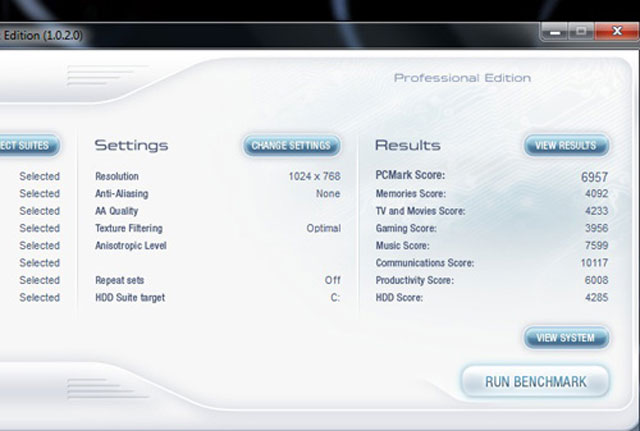
Scoring with PC Mark Vantage.
Continuing to use PCMark Vantage program to evaluate overall strength, Portégé scored 6,957 points, better than the average of nearly 6,000 points in popular laptops also using Intel Core i5 processor. second system.
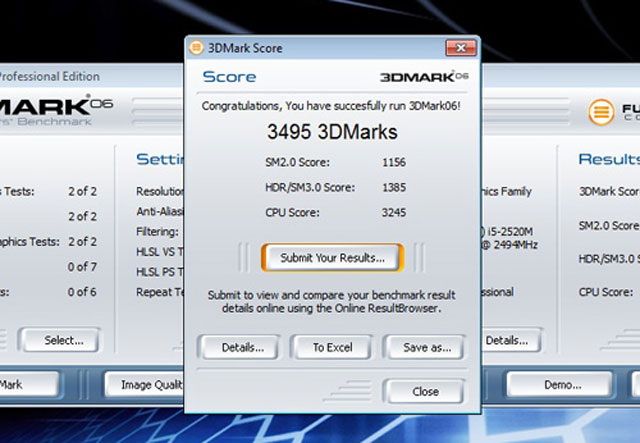
Score with 3D Mark 06.
Not using discrete graphics card but the R830 still reaches 3,495 points when evaluated by the 3D Mark 06 program. This number is even equivalent to the popular models equipped with the second generation Core i3 chip and the graphics card. Nvidia discrete graphics like the Acer 4750G. This score is also higher than the average of over 3,000 points in laptops using Core i5 chips and no other discrete graphics cards.

Microprocessor scoring.
Continue using the Cinebech 11.5 program to evaluate the processor and try OpenGl. The result with microprocessor achieved 2.71 points and average graphics with 8.29 frames per second.
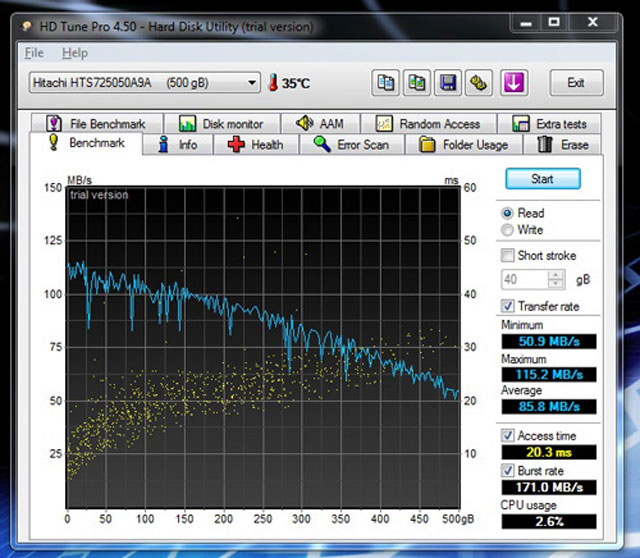
Large hard drive.
The hard drive that the R830 uses is a 500GB capacity, 7,200 rpm, produced by Hitachi. In fact, the average read speed on the drive is 85.8 MB / sec, which is about 80 MB / sec on hard drives at the same speed and capacity.
Part 1: Design, keyboard, TouchpadPart 3: Sound, heat sink, battery life
Part 4: Compare with some other models
Radiators.

The bottom of the machine has an exhaust fan to increase heat dissipation.

Temperature when starting the machine.
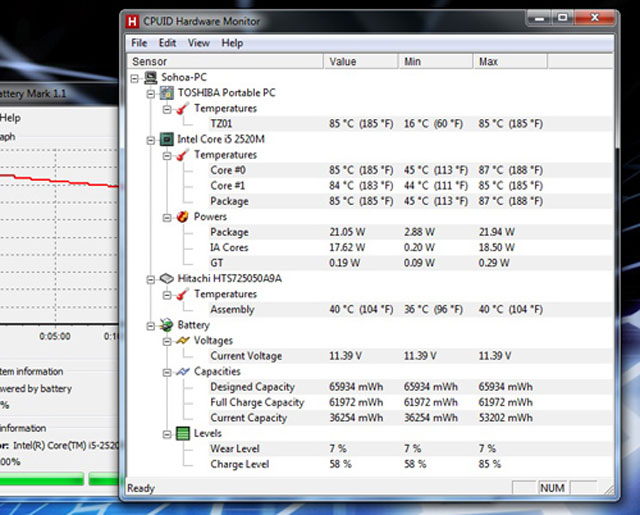
Machine temperature when running CPU full-load (100%) about 30 minutes.
A very unfortunate point is that the cooling capacity of the R830 has not improved much compared to its predecessor R700. Still using a bottom exhaust fan to increase the ability to regulate the radiator airflow inside the machine, but this model is still quite hot when used. According to the figures above, running the machine for about half an hour with 100% CPU mode (full-load) the machine heats up quite quickly. CPU temperature increased from an average of 47 degrees C when starting up to more than 80 degrees Celsius. The internal temperature also increased rapidly with this level.
The difference in temperature between the two halves is quite large, the left side gets hot quickly while the right side is very cool because there are almost no heat treatment components here.
However, if used on average with web and office applications with a temperature of around 24 degrees Celsius, this model is still good to use, hardly offensive.
Battery life.
Because of the high capacity battery, the Portégé R830 takes a long time to fully charge. It takes about 4 hours to fully charge if not in use and more than 4.5 hours if both charging and using.
Experimental open Firefox loads 10 web pages and automatically reloads every 15 minutes, opens an online music player page and gives continuous playback, using headphones instead of the speakerphone and leaving the volume level at 70%. 50% light for the machine to run until it turns itself off (to 5%), this time reaches 5 hours 23 minutes.

Time to watch movies in HD.
While testing the device to run a standard 720p HD movie and play it back continuously until it is off, turn off the Wi-Fi connection, use a headset instead of the speaker and put it at a volume of 70% (negative Windows Media Player program bar to 100%), 50% brightness for the device to run until it is turned off (with 5% battery level), this time reaches 5 hours 9 minutes.
These figures show the Portégé R830's battery life is very good. With this test result, users can safely use normally about 6 hours continuously without charging or a working day (more than 8 hours) with Eco mode.
Sound.
Like the R700, the R830 system still has poor speaker quality, often found on business models. This system gives small volume, enough to hear in the room below 20 m2 but the quality is not good with the sound much on treble with less bass. When it is fully open, it even sounds a bit shy.
Part 1: Design, keyboard, TouchpadPart 2: Screen, performance
Part 4: Compare with some other models
Compare with models of the same price range, screen size.
Model Toshiba Portégé R830 Sony Vaio SB 13 inch 14 inch screen Speedy Intel Core i5-2520M 2.5 GHz Intel Core i5-2410M speed 2.3 GHz RAM 4GB DDR3 4GB DDR3 Intel HD Graphics ATI Mobility Radeon HD 6470M / Intel HD Graphics 3000 500GB hard drive (7,200 rpm) 500GB (5,400 rpm) The port connects a USB 2.0 port, a USB 3.0, eSATA / USB combo, HDMI, a card reader, VGA. 2 USB 2.0 ports, USB 3.0, HDMI, card reader, VGA. Weight 1.4 kg 1.7 kg Highlights Endurance, impact resistance, water spill. Good graphics handling, beautiful screen
Part 1: Design, keyboard, TouchpadPart 2: Screen, performance
Part 3: Sound, heat sink, battery life
You should read it
- Toshiba Portégé R830 adds red and Core i7 chips
- Superport Portégé R830 costs 15.3 million
- Toshiba Vietnam launches notebook collection for summer 2011
- The most impressive ultraportable laptop in 2010
- 5 13-inch laptops 'desirable'
- Toshiba keyboard Ultrabook cost 36 million
- The world's lightest 13-inch laptop from Toshiba
- The MacBook Air pitted against the Portégé R830
- Toshiba A600 ultra-portable good price
- Toshiba Z930 is the best ultrabook rated
- Toshiba Portégé A605 portable laptop
- Toshiba Portege T230 costs 19.3 million VND in Vietnam






 Review Toshiba Satelite C600
Review Toshiba Satelite C600 Toshiba Z930 is the best ultrabook rated
Toshiba Z930 is the best ultrabook rated What is a review? Job experience test for people
What is a review? Job experience test for people Toshiba Z Series - Ultrabook premium for entrepreneurs
Toshiba Z Series - Ultrabook premium for entrepreneurs Toshiba's price range from 12.5 million to Vietnam
Toshiba's price range from 12.5 million to Vietnam Additional Toshiba laptops for pupils and students
Additional Toshiba laptops for pupils and students